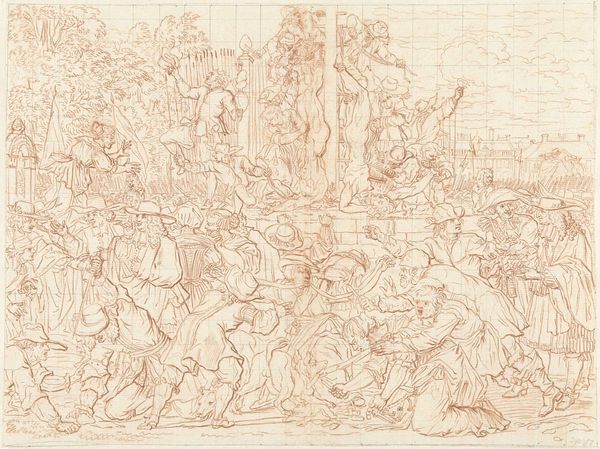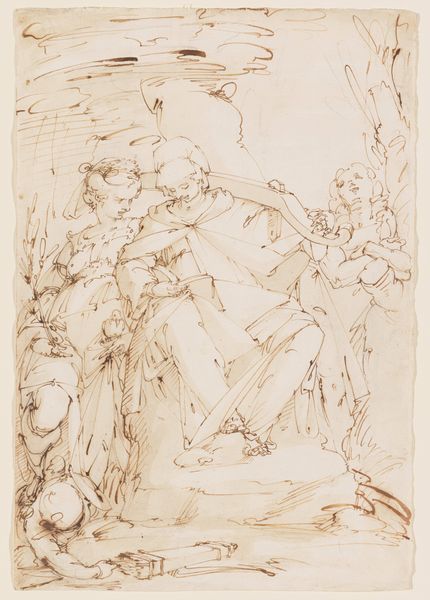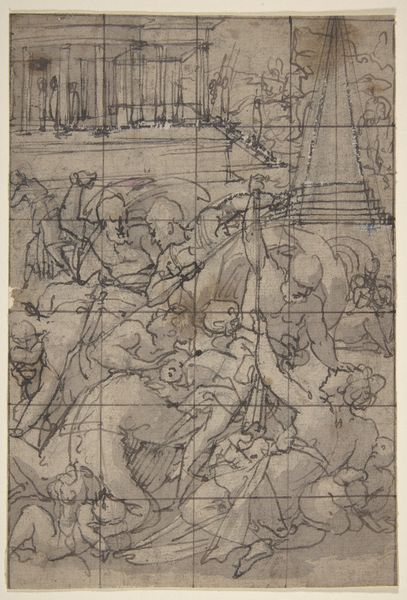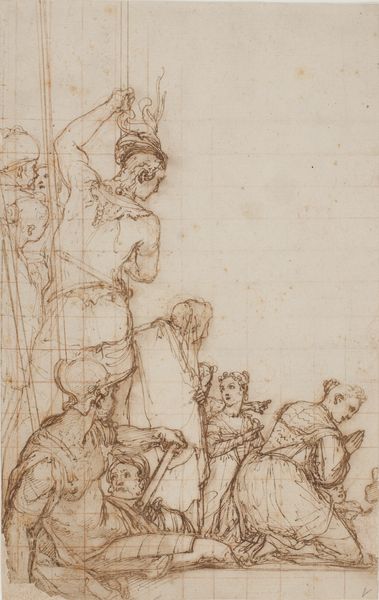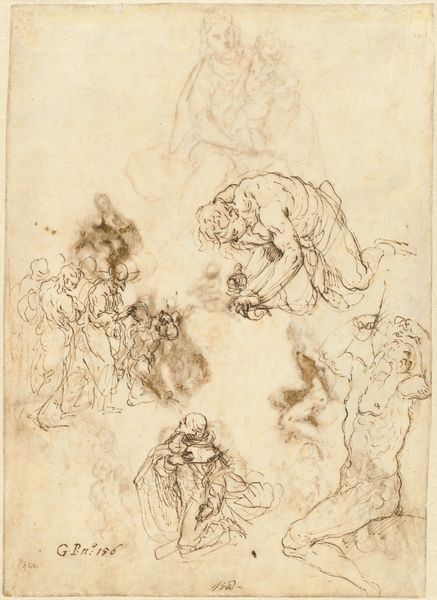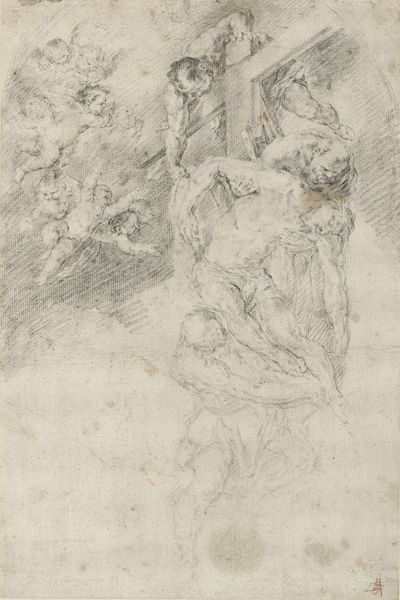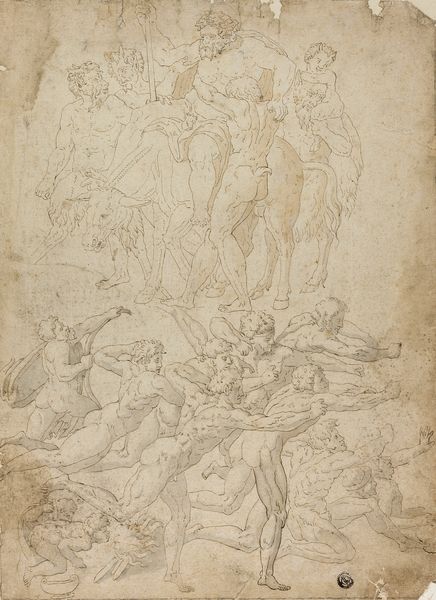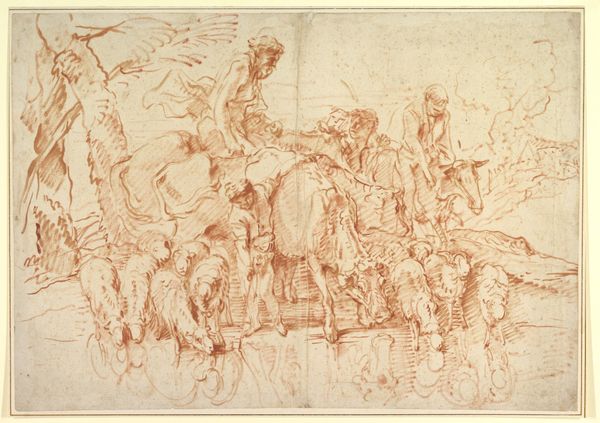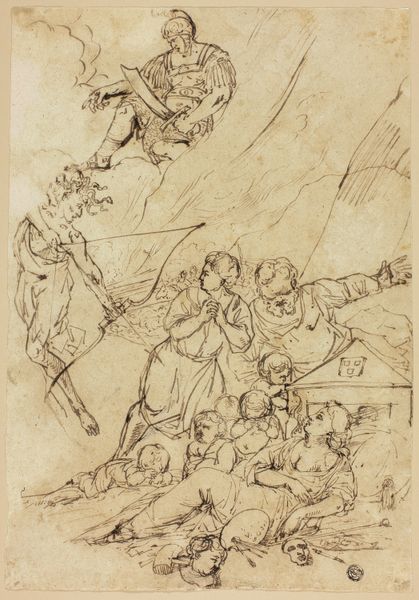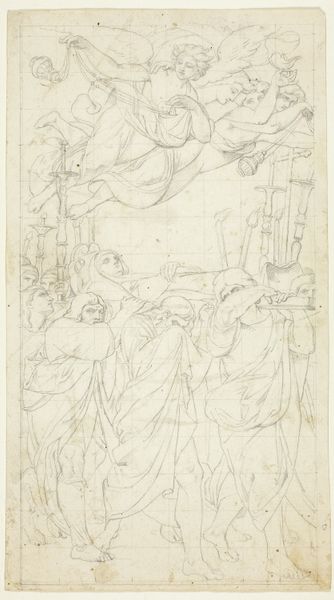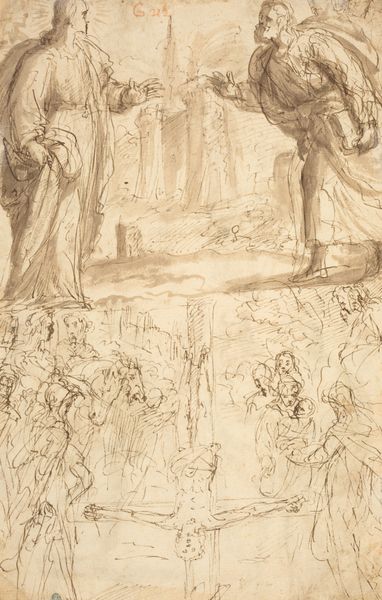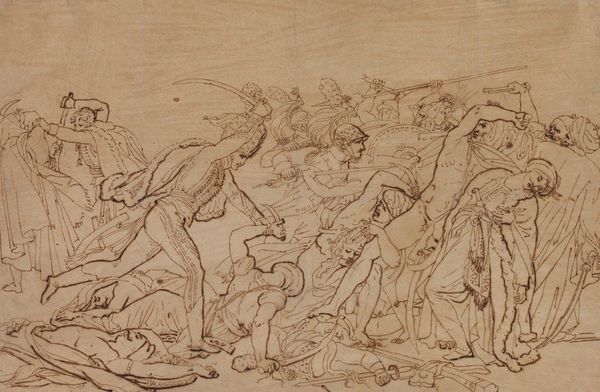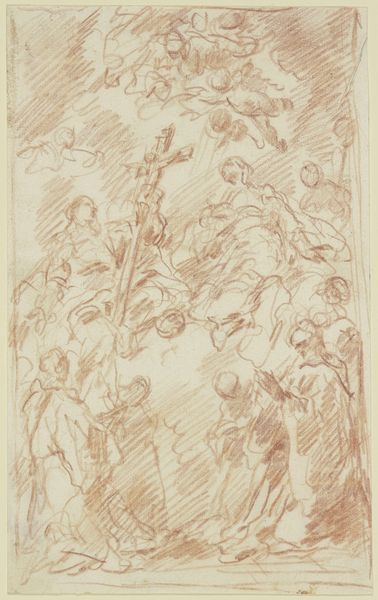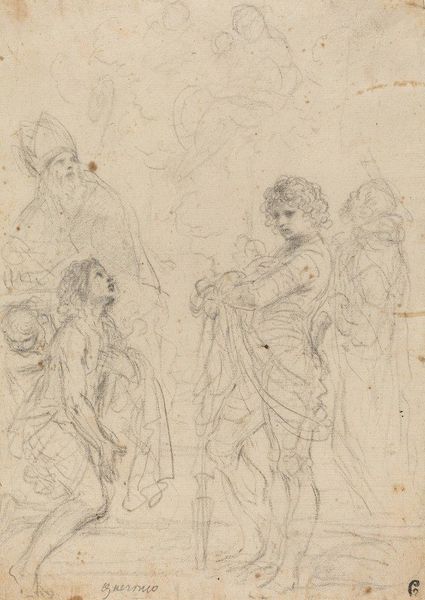
drawing, print, paper, ink, chalk, graphite, pen
#
portrait
#
drawing
# print
#
figuration
#
paper
#
11_renaissance
#
ink
#
chalk
#
line
#
graphite
#
pen
#
history-painting
#
italian-renaissance
Dimensions: 485 × 342 mm
Copyright: Public Domain
Curator: Here we have Federico Barocci’s "The Entombment of Christ," created between 1579 and 1593, a piece currently residing here at the Art Institute of Chicago. Editor: My first impression is of a flurry of grief, a whirlwind rendered in graphite and chalk— the eye struggles to find stillness in this scene of utter emotional disruption. Curator: Indeed, Barocci captures a potent moment of sorrow, and if we delve deeper, we can recognize it reflecting the social and political unrest present during the late Renaissance in Italy. The vulnerable, emotional rendering is a turn from more stoic, idealized depictions that preceded this. Editor: Precisely. Observe the delicate hatching, the way he builds form with such light, airy strokes. The red grid underlying the drawing emphasizes its function as preparatory study for a painting. Note the composition—figures cluster around Christ, creating a dynamic tension, contained in by these lines, almost suspended within them. Curator: Consider, also, the position of the women in the piece. Note the detail used to emphasize their expressions as they come to the forefront to mourn; this wasn't always afforded to women of this period, when looking at this same story being told by earlier artists. They aren't background ornamentation; they are key to experiencing this piece. Editor: The artist is exploring the theme, yet primarily experimenting with light, shade, and depth; he’s really pushing the use of chiaroscuro here within the medium. Notice the way Barocci uses line weight to create volume and atmosphere. Curator: Absolutely, and looking at Barocci through a critical lens allows us to consider questions around the power dynamics embedded in these depictions, challenging older interpretations and promoting a more inclusive understanding of history through art. Editor: In the end, whether studying through close visual analysis or from broader critical frameworks, what’s undeniable is the skill and ingenuity displayed by Barocci. Curator: This truly is an artwork that lends itself to a dialogue across time and culture, it pushes past only biblical analysis, so that the artwork remains so engaging centuries later.
Comments
No comments
Be the first to comment and join the conversation on the ultimate creative platform.
